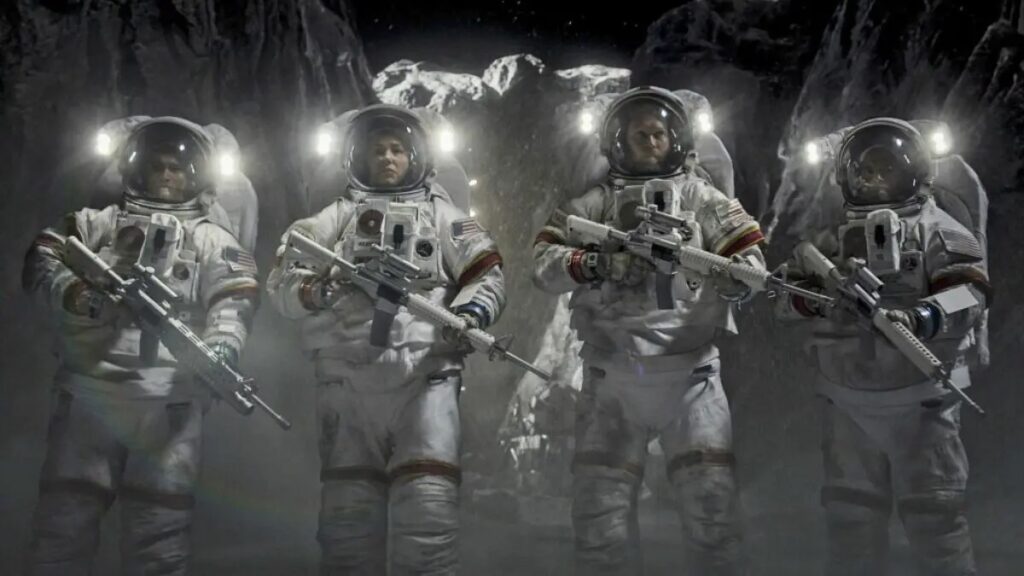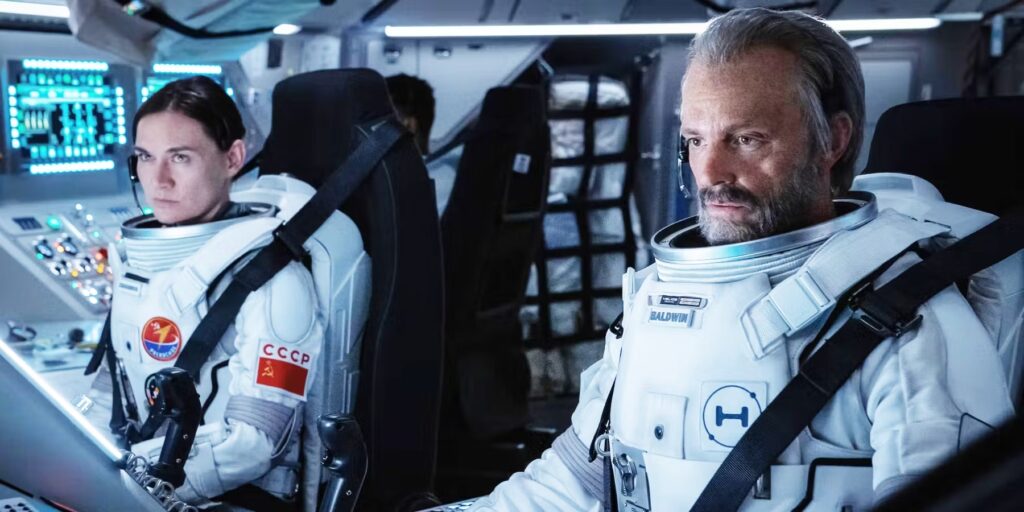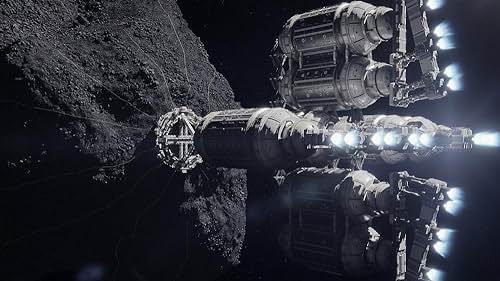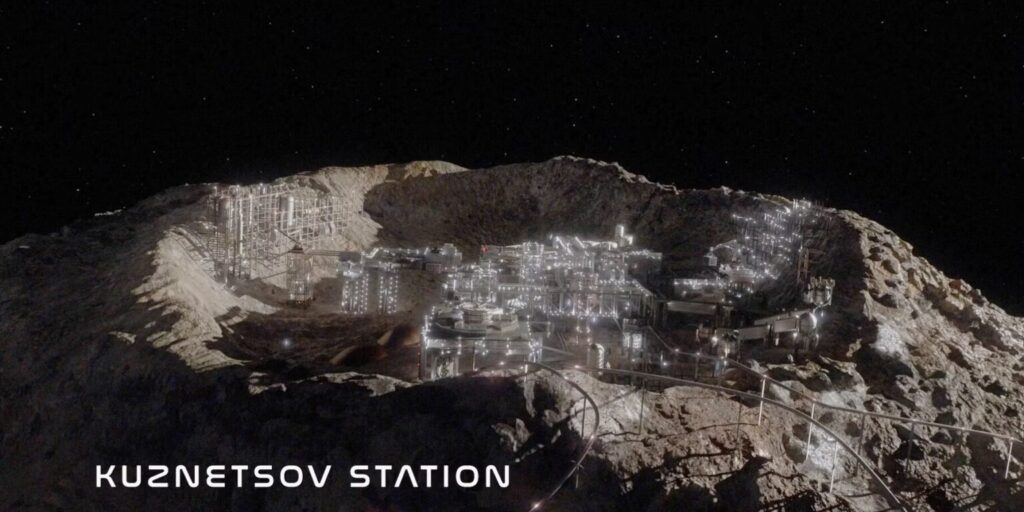Season 4 of the fantastic series For All Mankind has ended on Apple TV+. It continues to tell the story of what would have happened if the space race between the USSR and the US had not stopped in the late 1960s. The new episodes deal with the construction of a station on Mars and the extraction of resources from asteroids.

A series about an alternative history of space exploration
On January 12, the new season of the fantastic series For All Mankind ended on Apple TV+. Since its launch in 2019, this show has been attracting a lot of attention from space exploration fans, and the new episodes are no exception.
The reason for this is quite simple to understand. This is as realistic space fiction as fiction can be. The first seasons can be watched as a series about the life of NASA in the 60s, 70s, and 80s. The authors have approached all the details so carefully. If not for one thing.
In the world of For All Mankind, Soviet cosmonauts were the first to land on the Moon. As a result, NASA had to continue the space race and implement projects that were actually curtailed due to complexity and danger. And, of course, this led to human losses that could have been avoided.

But already in the 1970s, both the US and the USSR had their bases on the Moon, and in the 1980s they almost started a war there. Gradually, the authors’ reality became more and more distant from ours. At the same time, differences accumulated not only in space but also on Earth.
For example, in the series, the Soviet Union did not collapse in 1991. Gorbachev managed to complete perestroika and create something remotely resembling a civilized society. At the same time, private space companies appeared much earlier than in reality. So, during the first human flight to Mars, the series shows a rather strange situation when Americans, Russians, and the American private corporation Helios compete for the championship in achieving it. But this is nothing compared to the fact that the North Korean astronauts win the race.
In general, the series is full of unusual, though very logical plot twists that are combined with the description of quite familiar situations and therefore do not let the viewer get bored.
Mars 2003.
The fourth season of For All Mankind continues the traditions of the previous ones. Take its trailer, for example. It is made in the form of a commercial for the Helios corporation, which did not exist anywhere but in the series. The video follows all the canons of modern promotion. However, it offers everyone not only to join the world’s best team, but also to go to work on Mars.
In fact, the space part of the season takes place on Mars and its vicinity in the alternate year 2003. The International Station on the Red Planet has already been built and is gradually turning into a small town.
The time of the pioneers is a thing of the past. States and corporations are increasingly interested in how to make money there. Consequently, scientific teams planning to use robots to search for life on the Red Planet remain somewhere in the background.
Instead, the task of extracting resources from asteroids is becoming the main one. Accordingly, the Martian base is filled with people hired for this work, and most of the plot revolves around this topic and the problems associated with it.

On Earth, events take place in the United States and the Soviet Union. The creators of the series have never been ashamed of the idea that space exploration is closely related to politics, and sometimes it takes on quite disgusting forms. For the sake of continuing the joint program, you shouldn’t pretend that you don’t notice tanks driving around the capital of the partner country and people being hung from the ceiling in torture chambers.
Characters and scenery
In general, in this season the creators of the series have relied on imperfect characters who do questionable things. We are shown how the brave Mars explorers grow marijuana, distill moonshine, smuggle contraband, steal, initiate torture, and allow armed violence in their free time.
In this regard, it is especially interesting to watch those characters who have “survived” to this point from the very first season. After all, according to the internal chronology of For All Mankind, 34 years have passed since then. The actors and writers have done an incredible job of showing how victories and losses have turned young idealistic heroes into tired old cynics over this time.
The space scenery is also beautifully rendered. Whether it’s the space tug in front of us, the surface of an asteroid, the panorama of the ice-filled Korolev Crater, or the interiors of the North Korean section of the Martian base, everything seems very realistic. Of particular note is the extremely realistic depiction of plasma engines.

A prologue to Expansion?
Sci-fi fans who have already watched the fourth season of For All Mankind have already made an interesting assumption: it seems as if the authors want to make it a prequel to another extremely realistic sci-fi series, Expansion. Without disclosing the details of the series, we can state that these thoughts did not arise out of nowhere.
Indeed, the plot shows a colony on Mars rapidly moving towards greater independence from Earth. At one point, it seems that it won’t be long before the characters on the screen proclaim the Martian Congressional Republic. And the theme of resource extraction on asteroids suggests that yes, in the future, a nation may be born on them.
In fact, James Corey’s book series may have nothing to do with it. The independence of Martian colonies is not a new theme in science fiction, and it is based on a completely logical and scientific assumption.

Colonies beyond the Earth will be part of Earth’s states for as long as they depend on the resources of our planet. Mars is simply too far away for people living there permanently to consider any country on Earth home, and for someone to destroy the newborn state with the help of troops in case of independence.
And the same, after all, applies to any other colony that turns out to be self-sufficient. In the end, if earth stations in space begin to declare independence, it will be bad news only for the states and corporations that own them. But for all mankind and for its stellar future, as the creators of the series have repeatedly emphasized, you can do anything. The next season will show how far the characters of the series will go. Apparently, it will be set in an alternative 2012.

